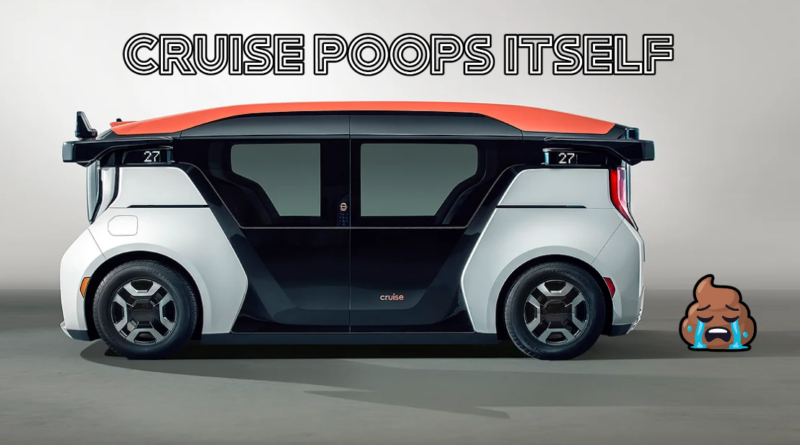Did Cruise Just Take On Too Much Risk?
We’ve been discussing Cruise and robotaxis for weeks following the unfortunate death of a pedestrian in San Francisco. It was a pedestrian who was first hit by a car next to a Cruise robotaxi, but we still don’t know if the person died on the first impact or after the Cruise robotaxi followed that up with what accidentally happened next.
However, despite some ongoing public uncertainty, what is clear is that Cruise is in crisis. Cofounder and CEO Kyle Vogt resigned. Cofounder and Chief Product Officer Dan Kan resigned. And, of course, Cruise’s operations in California were suspended and Cruise also paused operations across the country.
Jo Borras and I just talked about this on our latest episode of EVObsession, published a few moments ago, but I’ve found another notable piece of information since that recording.
ARK Invest’s Tasha Keeny posted a chart this week showing that Cruise vehicles were having accidents far more frequently than Waymo robotaxis, or Teslas for that matter. She prefaced the chart with, “Cruise imploded. It does look as if the company took on more risk than peers like Waymo.”
1) Cruise imploded. It does look as if the company took on more risk than peers like Waymo. 👇 pic.twitter.com/cR0w4U1tYb
— Tasha Keeney (@TashaARK) November 22, 2023
Assuming those numbers are correct, Cruise robotaxis were getting into far too many crashes!
That’s the beginning of a 6-tweet thread that explains the chart. Here’s the rest, in normal paragraph format:
“[Chart above] takes the figures that Cruise and Waymo adjust to be more apples to apples with the national average, and I adjust the national average to surface streets, as that accident statistic is higher per mile than on highway. Manual Tesla figure also adjusted for surface streets.
“Note Cruise & Waymo published reports that drill down to accident stats specific to SF and Phoenix, AND both focus on specific vectors like injury claims and fault, (& Cruise comps to ridehail) which look more favorable. [link]
“In contrast, my analysis focuses on a national level — Waymo still looks better than the average human, while Cruise falls below. To be fair, Cruise notes that most of their collisions were at low speed and they believe human drivers were often at fault.
“And yes, Tesla’s FSD software (which isn’t fully driver-out yet) appears to be much better than its human driven Tesla benchmark. Still, I was rooting for Cruise, for Kyle and the team.
“One more thing — While Cruise [may] have fallen by the wayside, both it and Waymo were pioneers in paving a path to regulatory approval for autonomous cars. It’s possible that could benefit a large, looming competitor.”
There’s a lot there to discuss, but I’ll leave most of it for now. With regards to Cruise, it does seem as though the company put its neck out on the line in various ways, and so I guess it makes sense that it is in the situation it’s in while Waymo is not.
One more thing I think this highlights is that the data we typically get from these cars and their producers is not quiet adequate. We can’t easily compare numbers across the industry, and we don’t have a lot of nuance or detail in what we see. That is due to the highly secretive nature of these companies. But none of these companies — not Cruise, not Waymo, not Tesla — want to share too much information and have the public digging around and analyzing them. Company concerns seem to outweigh any benefits that would come from notable transparency.
Have a tip for CleanTechnica? Want to advertise? Want to suggest a guest for our CleanTech Talk podcast? Contact us here.
Latest CleanTechnica.TV Video

CleanTechnica uses affiliate links. See our policy here.


